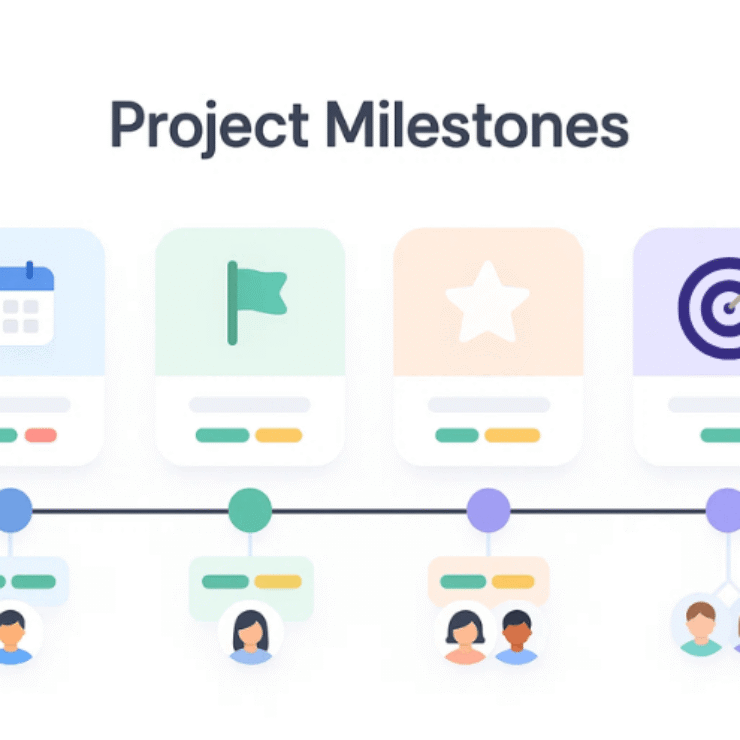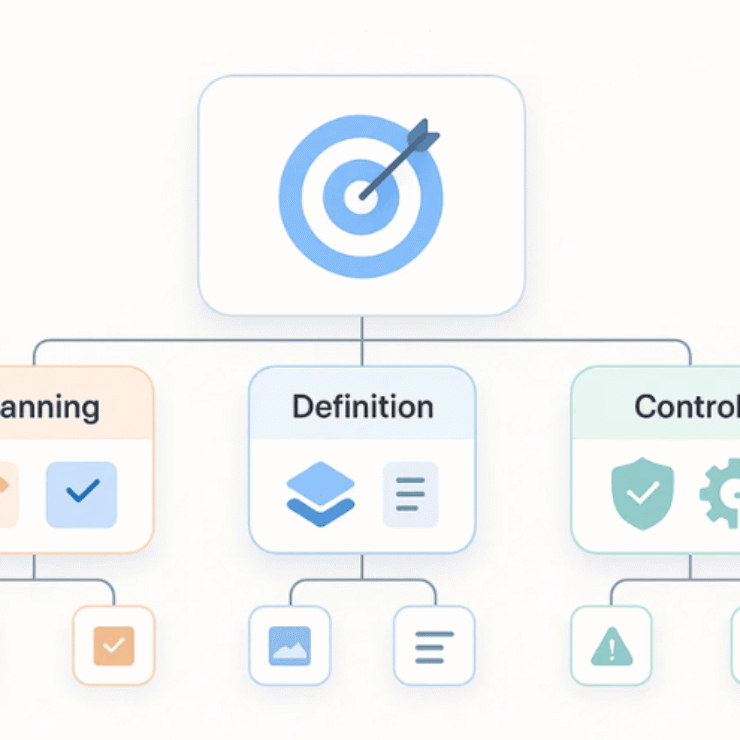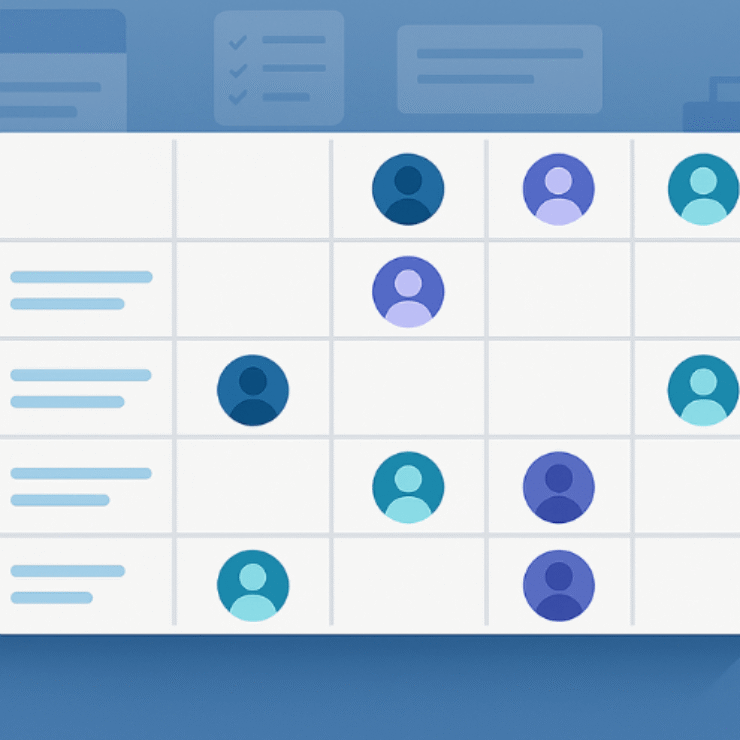Introduction
If you’ve managed projects for more than a few months, you already know this truth:
Bad estimates don’t just delay timelines — they quietly derail the entire project.
PMI reports that 37% of organizations cited inaccurate requirements as the primary reason for project failure, making estimation one of the most critical skills for project managers today. And even after 15+ years in project delivery, I still see teams struggle with the same issues: unclear scope, “ballpark numbers” presented as final budgets, and estimates created in isolation with zero historical data. Every time, the outcome is predictable — stress, rework, and frustrated stakeholders.
This guide is my attempt to simplify project estimation so you can actually forecast scope, effort, and timelines with confidence. We’ll walk through the main estimation techniques, a practical step-by-step process, and a real-world example you can replicate in your own projects.
What Are Project Estimation Techniques?
Project estimation techniques are structured ways to forecast time, cost, effort, and resources based on available data, scope clarity, and project complexity.
And estimation isn’t just about “how long will this take?”
It’s about answering:
- What needs to be done?
- How many people do we need?
- How much will it cost?
- Where are the risks?
- What is a realistic timeline?
Whether you’re building software, running a marketing campaign, or planning a rollout, these techniques help you avoid surprises later.
What You Should Estimate (Not Just Time!)
Most project estimates fail not because the technique was wrong — but because the team only estimated one dimension: time. In reality, accurate estimation requires looking at the project from multiple angles. Each one affects the others and ignoring even one can throw off your entire plan.
Here are the six dimensions you should always estimate before committing to timelines or budgets:
1. Scope
Scope defines the boundaries of your project — features, modules, deliverables, user stories, integrations, reports, everything. If the scope is vague, your estimate will always be vague. Break it down using a WBS so that each component can be estimated realistically.
2. Time / Schedule
This includes:
- Duration of individual tasks
- Milestones
- Dependencies between modules
- Deadlines that cannot move
Time estimation becomes far more reliable when linked to resource availability and task complexity.
3. Cost / Budget
Estimate both internal and external costs:
- Team effort (hours × rates)
- Tools or technology
- Vendors or contractors
- Licensing or hosting costs
Underestimating cost is one of the top reasons stakeholders lose trust during execution.
4. Resources
The same task can take 8 hours or 18 hours depending on:
- Skill level
- Experience
- Team capacity
- Number of parallel initiatives
Resource availability is often the hidden variable that completely changes timeline accuracy.
5. Risk & Uncertainty
Every project has unknowns:
- New technology
- External dependencies
- Third-party delays
- Approvals
- Integration complexity
Document risks early so you can adjust your effort, buffer, and contingency realistically.
6. Quality Expectations
Quality is not just testing — it includes:
- Performance
- Compliance
- Review cycles
- UX standards
- Acceptance criteria
Higher quality expectations automatically increase time and effort, so it must be estimated upfront.
Before You Estimate: Five Foundations Most Teams Skip
Most failed estimates happen because teams jump straight into numbers without preparing. Here are the essentials.
1. Clarify the Problem & Success Criteria
Make sure you understand:
- Why this project exists
- What “success” looks like
- What constraints you cannot violate
If these three aren’t clear, any estimate will be guesswork.
2. Define Scope Using a WBS
A Work Breakdown Structure (WBS) breaks big deliverables into smaller, manageable chunks.
Pro tip: In one of my earlier projects, we reduced estimation errors by almost 40% simply by switching from vague “modules” to a clean WBS that detailed every screen, API, and workflow. Clarity reduces surprises.
3. Gather Historical Data
Past projects are gold.
Look for:
- Previous timelines
- Actual vs estimated effort
- Common bottlenecks
- Benchmarks for similar work
Even one similar project can dramatically improve estimation accuracy.
4. Identify Risks, Assumptions, Dependencies
Document them early—don’t wait. A simple RAID log (Risks, Assumptions, Issues, Dependencies) helps prevent underestimating effort or timelines.
5. Bring the Right People Into the Room
No single person should estimate a full project.
Get inputs from:
- Tech leads
- Functional experts
- QA leads
- Vendors (if applicable)
Collaborative estimation minimizes blind spots.
The Main Types of Project Estimation Techniques (Explained Simply)
Let’s break down the techniques you’ll use most often — and when to apply each.
1. Top-Down Estimation
Start with the big picture (total time/cost) and break it down.
Best for: Early-stage planning, executive-driven timelines
Example: “We need this delivered in 10 weeks. How do we break the phases to fit 10 weeks?”
2. Bottom-Up Estimation
Estimate each task individually and roll it up to the total.
Best for: Detailed planning with a complete WBS
Insight from my experience: Bottom-up estimation is the MOST accurate method for tech-heavy projects — especially when modules vary widely in complexity.
3. Analogous Estimation
Use past similar projects as a baseline.
Best for: Quick estimates when you have good historical data
Example: “Our previous CRM migration took 8 weeks. This one is slightly simpler — estimate 6–7 weeks.”
4. Parametric Estimation
Uses data-driven formulas like:
- Cost per feature
- Hours per API
- Cost per square foot
- Hours per story point
Best for: Repetitive or predictable work
5. Three-Point (PERT) Estimation
Estimate using:
- Optimistic (O)
- Most likely (M)
- Pessimistic (P)
Formula: (O + 4M + P) / 6
Great for reducing the impact of uncertainty.
6. Expert Judgment
Use insights from senior team members or domain experts. Works best when combined with data — not used alone.
7. Agile Estimation Techniques
For Agile teams:
- Story points
- T-shirt sizing
- Planning Poker
- Velocity forecasting
These help estimate relative complexity instead of time.
8. Advanced Techniques
Use these for complex or high-risk projects:
- Monte Carlo simulation
- What-if scenario analysis
These are especially valuable because a McKinsey study found that large software projects run an average of 66% over budget—often due to underestimated risks and uncertainties. Advanced estimation techniques help expose these uncertainties early and reduce the likelihood of major overruns.
Project Estimation Techniques: A Step-by-Step Framework
Here’s the exact framework I recommend (and use myself):
Step 1: Understand the Context
Clarify:
- Business goals
- Constraints (time, cost, scope)
- Stakeholder expectations
Step 2: Build a WBS
Break the project into manageable chunks. If a task is too big to estimate, break it again.
Step 3: Choose the Right Technique
Use combinations:
- Early stage → top-down + analogous
- Detailed planning → bottom-up + three-point
- Agile → story points + velocity
- Complex → parametric + risk-based methods
Step 4: Run an Estimation Workshop
This step is crucial. In most workshops I’ve led, the best insights emerge when experts challenge each other’s assumptions. That’s where hidden risks surface.
Structure:
- Review WBS
- Discuss assumptions
- Estimate individually
- Compare and normalize
Step 5: Convert Effort Into Timeline & Cost
Consider:
- Team capacity
- Parallel work
- Dependencies
- Resource mix
Then convert hours → cost using rates or blended averages.
Step 6: Add Contingency
10–30% depending on:
- Complexity
- Dependencies
- Technology maturity
- Third-party involvement
Step 7: Validate the Estimate
Share with:
- Project stakeholders
- Technical leaders
- Finance/operations
Refine based on feedback and finalize your project baseline.
Worked Example: Estimating a Client Portal Project
Let’s take a simple scenario: Build a new client portal with login, dashboard, and reporting.
Step-by-step:
- Create WBS (Auth → Dashboard → Reports → Integrations)
- Use analogous estimation (past similar portal: 500 hours)
- Run bottom-up estimation task by task
- Apply three-point estimation for uncertain areas (e.g., reporting)
- Combine with Agile story points for iterative modules
- Add 15% contingency
- Final estimate range = 480–640 hours
This approach balances speed with accuracy.
How to Choose the Right Estimation Technique
Ask yourself:
- Is the scope clear?
- Do we have historical data?
- Is the deadline fixed?
- How risky is the project?
- Are we doing Agile or Waterfall?
Quick Cheat Sheet
- High uncertainty → Three-point + Expert judgment
- Lots of past data → Analogous + Parametric
- Agile team → Story points + Velocity
- Strict deadline → Top-down + phased refinement
Common Estimation Mistakes (Avoid These!)
1. Over-Optimism
The planning fallacy hits everyone.
2. Ignoring Dependencies
Integrations, approvals, vendor delays — always add buffer.
3. Estimating Alone
Get your team involved. Always.
4. Using Single-Point Estimates
Never commit to one number; use a realistic range.
5. Not Tracking “Estimate vs Actual”
If you never compare estimates with actuals, your estimation process never improves — you end up repeating the same mistakes in every project.
Best Practices to Improve Estimation Over Time
- Review past project data regularly
- Use a simple template for consistency
- Maintain an “estimation knowledge base”
- Do mini-retros after major projects
- Update your capacity assumptions quarterly
These habits sharpen accuracy significantly over time.
Final Thoughts
Project estimation isn’t about guessing — it’s about bringing structure, clarity, and collaboration to how work is planned. After 15+ years of leading delivery teams, one lesson has stayed constant: estimates become accurate only when you combine the right techniques with the right preparation.
Break the work down. Use data where you have it. Bring experts into the room. Track estimate vs actual. Refine continuously. If you follow this guide’s framework — WBS → technique → workshop → validation → contingency — your estimates will become sharper, more reliable, and far more trusted by stakeholders.
Good estimation isn’t luck. It’s a discipline you build over time.
FAQs
Project estimation techniques are structured methods used to forecast the effort, time, cost, and resources required to complete a project. These methods help project managers create realistic schedules, budgets, and plans before execution starts.
There is no single “best” technique. For accuracy, most professionals combine bottom-up estimation, three-point estimation, and historical data. Early-stage estimates often use top-down or analogous techniques, while Agile teams rely on story points and velocity.
A simple step-by-step process includes:
Understand the project context
Break work into a WBS
Choose estimation techniques
Run collaborative estimation sessions
Convert effort to timelines and cost
Add contingency
Validate with stakeholders
This structured flow helps avoid underestimation and surprises later.
Top-down starts with the total time or budget and allocates work backward. Best for early planning.
Bottom-up estimates individual tasks and adds them up. Best for detailed planning and the most accurate of the two.
Three-point estimation uses Optimistic (O), Most Likely (M), and Pessimistic (P) scenarios to calculate a realistic average. It helps teams handle uncertainty and avoid overly optimistic “single-number” estimates.
Agile teams use relative estimation through:
Story points
T-shirt sizing
Planning Poker
These methods estimate complexity rather than hours, and velocity later converts those story points into timelines.
Use high-level techniques such as:
Top-down estimation
Analogous estimation
T-shirt sizing
Expert judgment
Refine the estimate as the scope becomes clearer (progressive elaboration or rolling-wave planning).
Parametric estimation uses measurable variables (e.g., cost per feature, hours per API, cost per sq ft) to calculate effort or cost. It’s highly accurate when past data is reliable.
A WBS simplifies estimation by breaking the project into smaller, clearly defined tasks. Each task can be estimated accurately, and the totals roll up to form a realistic project-wide estimate.
You can improve estimation accuracy by:
Tracking “estimate vs actual”
Using historical project data
Running estimation workshops
Updating templates regularly
Refining velocity or capacity models
Adding contingency based on risk
Consistency and reflection are key.



